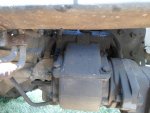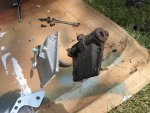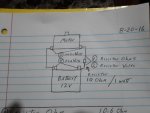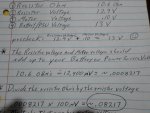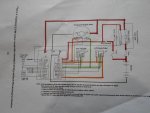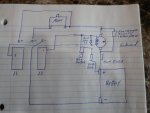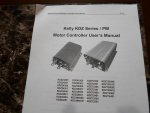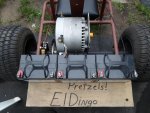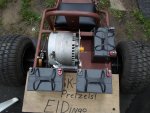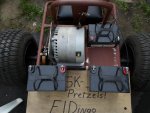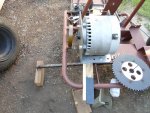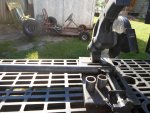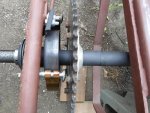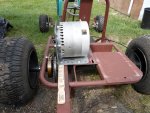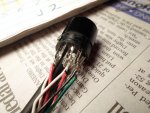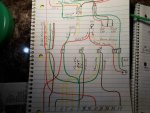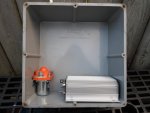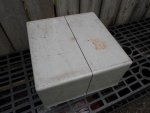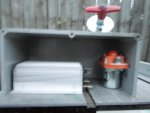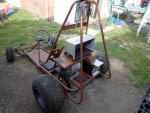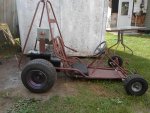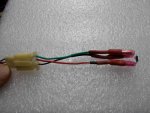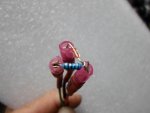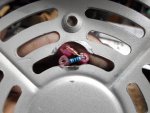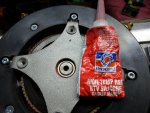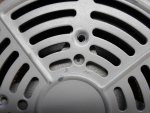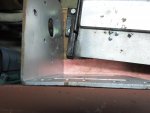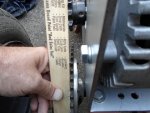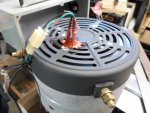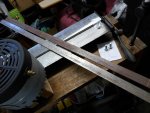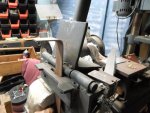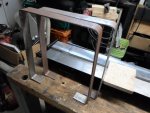Functional Artist
Well-known member
Hello All,
I would like to enter "ElDingo" my 2016 project in your contest.
It is an old Dingo by Manco that I am in the process of rebuilding and converting to electric.
I didn't know about this forum but, I have been documenting the build or rebuild on Youtube. Check out my channel "Functional Artist"
I have built a couple of electric go carts for my kids https://www.youtube.com/watch?v=YZ6bcBy1O1M ,https://www.youtube.com/watch?v=qTRA1FXz9Lw and last year I built a bigger more powerful cart I called "Double Trouble" https://www.youtube.com/watch?v=TRIKLdvGlTA it has 2 electric motors and is fun but, for this year I want to go "Bigger".
I was in the process of designing a frame when I found a "go cart" frame on Craigslist for $50.00. I figured if it was usable I could get right to the "Big Motor" part of the project.
It ended up being a Dingo made by Manco.
The frame, rear axle, rear rims & pedals are all that was salvageable. (see ElDingo part 1) posted 6/14/16 https://www.youtube.com/watch?v=Ysib9TNE_sc
But, so far I have cleaned it up. (part 2) posted 6/20/16 https://www.youtube.com/watch?v=_lOHKiVTC_o
Changed the rear bearings, basically rebuilt the rear end. (part 3) posted 6/24/16 https://www.youtube.com/watch?v=k0MxFj24A1A
Aligned, measured & made tie rods for it. (part 4) posted 7/17/16 https://www.youtube.com/watch?v=HU_pBr0jwM4
Then comes the "Big Motor" that's where I kinda got stuck for a minute. The ad I bought the motor from said that no expensive controller was required and showed a drawing of a slide contact speed controller. I looked for a while but, could not find such a thing, so I made my own & tested it on a small motor. (part 5) 7/23/16 https://www.youtube.com/watch?v=Jx7pj3ule0Q
My "Simple Controller" passed the small motor test with flying colors so I bench tested it on the "Big Motor". (part 6) 7/24/16 https://www.youtube.com/watch?v=c7q2Lq0P604
Stay tuned much more to come!
Made more progress over the weekend.
On Saturday I worked on installing the motor, chain & made a tray for the batteries. (part 7) https://www.youtube.com/watch?v=U9ZE3YCD7iE
On Sunday I made a seat, a lid for the battery tray & finally started installing the electrical components.(part 8) https://www.youtube.com/watch?v=C1V3vL7MOfY
I would like to enter "ElDingo" my 2016 project in your contest.
It is an old Dingo by Manco that I am in the process of rebuilding and converting to electric.
I didn't know about this forum but, I have been documenting the build or rebuild on Youtube. Check out my channel "Functional Artist"
I have built a couple of electric go carts for my kids https://www.youtube.com/watch?v=YZ6bcBy1O1M ,https://www.youtube.com/watch?v=qTRA1FXz9Lw and last year I built a bigger more powerful cart I called "Double Trouble" https://www.youtube.com/watch?v=TRIKLdvGlTA it has 2 electric motors and is fun but, for this year I want to go "Bigger".
I was in the process of designing a frame when I found a "go cart" frame on Craigslist for $50.00. I figured if it was usable I could get right to the "Big Motor" part of the project.
It ended up being a Dingo made by Manco.
The frame, rear axle, rear rims & pedals are all that was salvageable. (see ElDingo part 1) posted 6/14/16 https://www.youtube.com/watch?v=Ysib9TNE_sc
But, so far I have cleaned it up. (part 2) posted 6/20/16 https://www.youtube.com/watch?v=_lOHKiVTC_o
Changed the rear bearings, basically rebuilt the rear end. (part 3) posted 6/24/16 https://www.youtube.com/watch?v=k0MxFj24A1A
Aligned, measured & made tie rods for it. (part 4) posted 7/17/16 https://www.youtube.com/watch?v=HU_pBr0jwM4
Then comes the "Big Motor" that's where I kinda got stuck for a minute. The ad I bought the motor from said that no expensive controller was required and showed a drawing of a slide contact speed controller. I looked for a while but, could not find such a thing, so I made my own & tested it on a small motor. (part 5) 7/23/16 https://www.youtube.com/watch?v=Jx7pj3ule0Q
My "Simple Controller" passed the small motor test with flying colors so I bench tested it on the "Big Motor". (part 6) 7/24/16 https://www.youtube.com/watch?v=c7q2Lq0P604
Stay tuned much more to come!
Made more progress over the weekend.
On Saturday I worked on installing the motor, chain & made a tray for the batteries. (part 7) https://www.youtube.com/watch?v=U9ZE3YCD7iE
On Sunday I made a seat, a lid for the battery tray & finally started installing the electrical components.(part 8) https://www.youtube.com/watch?v=C1V3vL7MOfY
Attachments
Last edited:

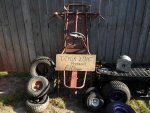
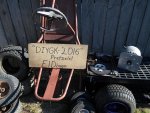
 ..to the forum. Good luck!
..to the forum. Good luck! But it will be worth the money, the website looks a lot more reliable than the eBay seller you got the motor from!
But it will be worth the money, the website looks a lot more reliable than the eBay seller you got the motor from!